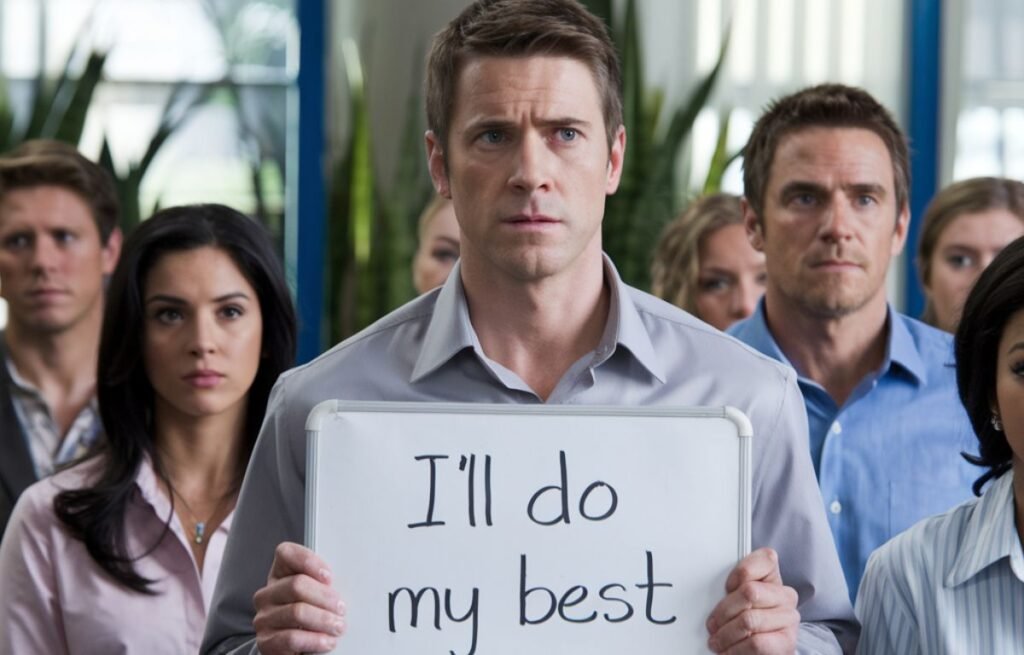When you’re in a conversation, whether in a professional setting or casual chat, the phrase “Sounds good” is often the go-to response to express agreement, approval, or enthusiasm. But using the same phrase repeatedly can become stale and predictable. In this article, we’ll explore 30 other ways to say “Sounds good” that will help you stand out in your communications and convey your message with a bit more flair.
Why Finding Alternatives to “Sounds Good” Matters
Before diving into the alternatives, it’s worth understanding why expanding your vocabulary is beneficial. Using varied expressions can make your conversations more engaging and show that you are thoughtful in your communication. This is especially important in professional settings, where how you present yourself can influence others’ perceptions of your competence and personality. Switching up your language can also prevent misunderstandings, as some alternatives might be more precise in conveying your intentions.
1. “That Works for Me”
One of the simplest and most effective alternatives to “Sounds good” is “That works for me.” It conveys agreement and implies that the plan or idea is acceptable. It’s straightforward and often used in both professional and casual settings.
2. “I’m On Board”
When you want to express enthusiasm about a plan or idea, saying “I’m on board” is a great choice. It indicates that you’re fully committed and ready to proceed, making it an excellent alternative in team settings or collaborative projects.
3. “Absolutely”
“Absolutely” is a confident and positive response that shows you’re in complete agreement. It’s a versatile phrase that can be used in many situations, from informal chats to formal meetings.
Also Read: 20 Other Ways To Say “I’m Waiting for Your Response”
4. “Perfect”

If something meets your expectations or is exactly what you were hoping for, responding with “Perfect” is a concise and positive way to show approval. It’s a great choice when you want to acknowledge that something is just right.
5. “I Agree”
Sometimes, simplicity is key. Saying “I agree” is a direct way to show that you’re in alignment with someone’s opinion or decision. It’s a classic phrase that works well in any context.
6. “Sounds Like a Plan”
“Sounds like a plan” is a slightly more casual way of expressing agreement. It’s often used when you’re discussing arrangements or future actions and want to signal that you’re ready to move forward with the discussed plan.
7. “I’m in”
Short, sweet, and to the point, “I’m in” is a great way to show your enthusiasm for being part of something. Whether it’s a project, plan, or idea, this phrase lets others know that you’re committed and ready to participate.
8. “That’s Fine with Me”
When you want to show that you’re okay with a proposal or decision, “That’s fine with me” is a polite and neutral way to express your approval. It’s particularly useful when you want to be agreeable without showing too much excitement.
9. “Let’s Do It”
If you’re ready to take action, saying “Let’s do it” is a motivational way to express your agreement. This phrase is full of energy and enthusiasm, making it perfect for situations where you want to rally a group or move forward quickly.
10. “I’m All for It”
When you’re fully in favor of an idea or plan, “I’m all for it” is an enthusiastic way to show your support. It’s a phrase that conveys eagerness and a positive attitude.
Also Read: Your Ultimate Guide to GSMLS com
11. “That’s Great”

Sometimes, you just need to keep it simple. “That’s great” is a positive and straightforward way to express approval. It’s versatile and can be used in many different contexts, making it a handy phrase to have in your vocabulary.
12. “I’m Good with That”
If something is acceptable to you, saying “I’m good with that” is a casual yet clear way to express your agreement. It’s a friendly phrase that’s often used in informal conversations.
13. “Fair Enough”
“Fair enough” is a slightly more neutral phrase that shows you find a suggestion or decision acceptable. It’s a good choice when you want to acknowledge someone’s point without overwhelming enthusiasm.
14. “I’m Okay with That”
Another simple alternative is “I’m okay with that.” It’s a gentle and agreeable way to show that you’re fine with a proposed idea or plan. It’s especially useful in situations where you want to maintain a relaxed tone.
15. “That’ll Do”
When something meets your requirements, but you’re not necessarily excited about it, saying “That’ll do” is a practical response. It shows that you’re satisfied and ready to move forward.
16. “I’m Down”
In casual conversations, “I’m down” is a trendy and relaxed way to express your willingness to participate in something. It’s especially popular among younger generations and is often used when making plans with friends.
17. “That’s a Good Idea”

When you want to acknowledge that a suggestion is worthwhile, “That’s a good idea” is a positive and affirming phrase. It’s a polite way to show that you appreciate someone’s input and agree with their proposal.
18. “I’m In Agreement”
For a more formal tone, “I’m in agreement” is a polished way to express that you share someone’s opinion or support their decision. It’s often used in professional settings where clarity and precision are important.
19. “I’m With You”
“I’m with you” is a supportive phrase that shows solidarity and agreement. It’s a warm and friendly way to let someone know that you’re on the same page.
20. “That’s Acceptable”
If you want to be neutral and professional, saying “That’s acceptable” is a clear way to show that you approve of a proposal or plan. It’s a phrase that works well in more formal or business-oriented conversations.
Also Read: 17 Other Ways To Say “Thank You for Letting Me Know”
21. “That’s Fine by Me”
Another polite and agreeable alternative is “That’s fine by me.” It’s a casual way to express that you’re okay with a suggestion or decision, often used in everyday conversations.
22. “I’m All In”
When you’re ready to fully commit to something, saying “I’m all in” shows enthusiasm and dedication. It’s a phrase that conveys excitement and readiness to take part in an endeavor.
23. “It’s a Deal”
“It’s a deal” is a friendly and positive way to express agreement, especially in situations where an arrangement or agreement has been made. It’s a phrase that suggests a sense of finality and mutual understanding.
24. “You’ve Got It”
When you want to affirm that you’ll follow through on a request or plan, saying “You’ve got it” is a reassuring and supportive response. It shows that you’re ready to take action and fulfill your part of the agreement.
25. “That’s Doable”
“That’s doable” is a practical and positive way to express that a plan or idea is feasible. It’s a good choice when you want to show that you’re confident in the success of a proposal.
26. “I’m With That”
If you want to show agreement in a casual and relaxed manner, “I’m with that” is a great alternative. It’s often used in informal settings and conveys a sense of camaraderie.
27. “Let’s Go for It”
When you’re ready to take action and move forward, saying “Let’s go for it” is an enthusiastic way to express your approval. It’s a phrase that’s full of energy and optimism, making it perfect for motivating others.
28. “That’s the Way to Go”
If you want to commend someone on a good decision, “That’s the way to go” is a positive and supportive phrase. It shows that you believe the chosen course of action is the right one.
29. “I Can Get Behind That”
When you’re ready to support an idea or plan, “I can get behind that” is a strong way to show your agreement. It’s a phrase that conveys both approval and willingness to participate.
30. “We’re on the Same Page”
“We’re on the same page” is a reassuring phrase that shows you share the same understanding or agreement as someone else. It’s a great way to affirm that you’re aligned in your thoughts or plans.
Conclusion
In any conversation, whether personal or professional, how you express agreement matters. By diversifying your responses, you can add more nuance and personality to your interactions. Using alternatives to “Sounds good” can make your communication more engaging and show that you are thoughtful and versatile in your language. Next time you find yourself reaching for the default phrase, try one of these 30 alternatives instead and watch how it enhances your conversations.
FAQs
1. Why should I use alternatives to “Sounds good”?
Using alternatives to “Sounds good” helps keep your communication fresh and engaging. It shows that you are versatile in your language and can express agreement or approval in a way that suits the context better. This can be especially important in professional settings where varied language can make you appear more thoughtful and articulate.
2. Are these alternatives appropriate for professional settings?
Yes, many of the alternatives provided are appropriate for professional settings. Phrases like “That works for me,” “I agree,” and “I’m in agreement” are all suitable for formal conversations. It’s important to choose the phrase that best matches the tone and context of your discussion.
3. Can I use these alternatives in casual conversations?
Absolutely! Many of the alternatives, such as “I’m down,” “Let’s do it,” and “Sounds like a plan,” are perfect for casual conversations with friends or family. They add a bit of variety to your speech and can make your interactions more lively.
4. Will using different phrases make my communication more effective?
Yes, varying your language can make your communication more effective by ensuring that your message is clear and appropriately tailored to the situation. It can also help prevent your speech from becoming monotonous and keep your audience engaged.
5. How do I choose the right alternative?
Choosing the right alternative depends on the context of the conversation and your relationship with the person you’re speaking to. For formal settings, opt for more neutral and professional phrases like “I agree” or “That’s acceptable.” In casual settings, you can be more relaxed with phrases like “I’m in” or “Sounds like a plan.”
6. Are these alternatives common in everyday language?
Yes, many of these alternatives are commonly used in everyday language. Phrases like “Perfect,” “Absolutely,” and “That’s great” are frequently heard in both professional and casual conversations. Incorporating these into your speech will feel natural and relatable.
7. Can using alternatives to “Sounds good” improve my writing?
Using a variety of phrases can definitely improve your writing by making it more dynamic and engaging. Whether you’re writing emails, reports, or casual messages, having a broader vocabulary allows you to express your thoughts more precisely and keeps your writing interesting.
8. Is it important to match the tone of my response to the situation?
Yes, matching the tone of your response to the situation is crucial. In formal settings, a more reserved and professional tone is often appropriate, while in casual settings, a relaxed and friendly tone works best. Choosing the right phrase helps convey the appropriate tone and ensures your message is received as intended.
9. How can I practice using these alternatives?
To practice using these alternatives, try incorporating them into your daily conversations. You can also write out sample dialogues or responses using different phrases to see which ones feel most comfortable to you. Over time, you’ll become more confident in using a variety of expressions.
10. Will these alternatives make me sound more confident?
Yes, using a range of expressions can make you sound more confident because it shows that you are thoughtful in your communication and capable of expressing agreement or approval in different ways. Confidence often comes from knowing you have the right words to convey your message effectively.

As a seasoned contributor to “Meowskull”, Rosalie combines her linguistic prowess with a keen understanding of various topics, ensuring a delightful and informative reading experience. Her articles effortlessly blend clarity, creativity, and a touch of elegance, making language exploration an exciting journey for readers.